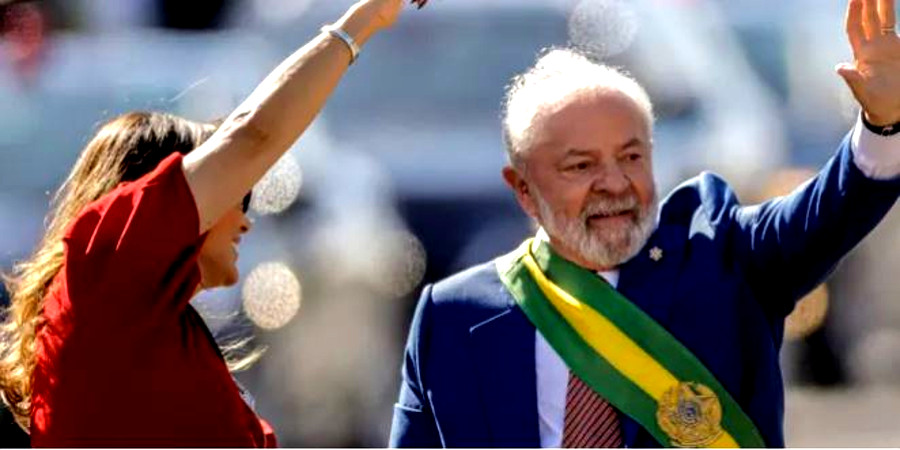 |
|
Lula government prepares new attacks on Brazil’s workers and poor However, now that the vast majority of the Central Bank’s directors and its president, Gabriel Galípolo, are direct appointees of the PT government, what is seen is the continuation of Campo Neto’s monetary policy. Finance Minister Fernando Haddad said in an interview last Friday that “The remedy for correcting inflation is often to raise interest rates to inhibit price rises.” At the end of January, the Central Bank raised the interest rate to 13.25 percent, the highest real rate in the world, and the prospect is that it will reach 15 percent in April. At the end of January, some economic figures for 2024 were released which, from the Lula government’s class perspective, justify its concern. In 2024, Brazil’s Gross Domestic Product (GDP) grew by 3.6 percent, while this year the government expects it to grow by up to 2.5 percent. There is also the possibility that the Brazilian economy will enter a technical recession (two quarters of falling GDP) in 2025. Last year, Brazil saw a 4.8 percent increase in the inflation, driven mainly by higher food prices for the poorest. Household food inflation was 8.2 percent, while food and beverages pushed up inflation for low-income families by 2.3 percentage points, compared to 0.9 percentage points for high-income families. In the first week of February, the federal and state governments raised fuel prices, with gasoline going up by 2.4 percent and diesel by 4.2 percent. The huge dependence on trucks for food distribution in Brazil will certainly mean that the increase in fuel prices will be transferred to food, further increasing the inflationary perspective. The government expects inflation of 5.51 percent this year. Any prospect of Lula’s government acting to alleviate the scenario of accelerating degradation of living conditions, especially for the poorest, is an illusion. Ignoring the huge profits of large companies and banks in Brazil last year, which at least partly explains the high food inflation, Lula declared on February 6: “I can’t freeze [prices], ... what we need to do is call the businessmen, talk to the whole sector, and see what we can do to ensure that the basic food basket of the Brazilian people fits within their budget with a certain flexibility.” The following day, the announcement that the Ministry of Social Development would increase the value of Bolsa Família, one of the largest social assistance programs for people living in extreme poverty, against the rise in food prices was almost immediately denied by the government. In a statement, Minister Wellington Dias was forced to acknowledge that “All the actions of this Ministry are taken in accordance with the guidelines of the federal government, especially with regard to fiscal responsibility.” The Bolsa Família and the Continuous Cash Benefit (BPC), which pays a minimum wage to elderly and disabled people living in extreme poverty, have been attacked by the Lula government’s austerity package approved in December. With the prospect of a reduction in the number of beneficiaries—being intentionally provoked by the PT’s austerity package—and a smaller increase in the value of these benefits—which are dependent on the increase in the minimum wage, another item targeted by the austerity package—social inequality in one of the world’s most unequal countries will certainly increase. An article in the newspaper O Globo titled “Misery falls, inequality doesn’t: experts explain why Brazil doesn’t distribute income,” reported in early December that “IBGE [Brazilian Institute of Geography and Statistics] estimates that inequality would have increased by 7.2 percent in 2023” if Bolsa Família and BPC were disregarded. In 2023, even with GDP growing by 3.2 percent, social inequality in Brazil was the same as in 2022, reaching 0.518 according to the Gini index. It is surpassed only by the poorest countries in Africa. At the same time, the report says that, according to IBGE, the “heated market ... has mainly benefited higher-income groups, since they depend more on wages. In other words, the gains of the labor market were not appropriated by the most vulnerable.” In fact, even after Brazil’s GDP has grown over the last four years, the average income of workers in Brazil is still at the pre-pandemic level. The impact of the aggravation of social inequality among the active workforce, highly understated by the government and in bourgeois public opinion, is brutal. Although unemployment is formally at its lowest level since 2012, having reached 6.6 percent last year, this statistic disregards underemployed workers—people who work less than they would like or are not looking for a job. Were these numbers considered, the unemployment rate would double. In Brazil’s poorest states, such as Bahia and Pernambuco, official unemployment already exceeds 11 percent. Those employed face brutal levels of exploitation. Most formal workers in Brazil are in services and commerce, industries in which the so-called 6x1 scale (six days of work, one of rest) predominates, with working hours of 44 hours a week or more. Almost 40 percent of Brazilian workers are in the informal sector, rising to more than 50 percent in the impoverished states of the Northeast. The Lula government is trying hard to paint the country’s economic and social life in rosy colors that frontally clash with reality. On February 3, at the start of the Brazilian Congress’s legislative year, Lula declared that “In these two years, Brazil has become less poor and less unequal, with rising wages, higher labor income and fairer income distribution.” But Brazilian workers doesn’t seem to agree. At the end of January, an opinion poll by Quaest showed that for the first time since the start of his term, Lula had negative approval rating. Approval fell from 52 percent in December 2024 to 47 percent in January 2025, driven by the economic difficulties of the Brazilian population due to low wages and high inflation. In the Northeast, where the PT has a significant electoral base mainly among the poorest, Lula’s approval went from 67 percent in December to 59 percent. Following the PT’s collapse at the polls in last November’s municipal elections, the soaring inflation, the government’s austerity measures and Lula’s broken promises to reverse the pro-corporate reforms implemented by the right-wing Michel Temer (2016-2018) and Bolsonaro administrations, there is growing speculation that this government will pave the way for a return of the far-right to power, as happened in the United States with the reelection of Trump. This has led to growing dissension within the PT and among its allies. In December, João Pedro Stédile, leader of the Landless People’s Movement (MST) said in interviews that “the public policies [of the Lula government] are not reaching the poorest among us, in the suburbs and in the countryside”, and that “Land reform has come to an absolute standstill in these two years.” Before the Lula government approved its austerity package at the end of December, long-time PT leader and former party president José Genuíno told TV Fórum that measures like this are “the path to the PT’s political defeat. I think there’s a climate of apprehension at the ranks of the party, there’s a climate of dissatisfaction.... I think we’re at a certain crossroads.” Major class battles lie ahead for the Brazilian and Latin American working class. Last year, virtually all sectors of the federal public employees went on months-long strikes against the Lula government’s claim that there is no money for social services in Brazil. As the economic and social crisis intensifies, more workers will clash with the PT government, as well as the unions it controls and the Brazilian pseudo-lefts who are doing everything they can to cover up the growing attacks on living conditions. https://www.wsws.org/en/articles/2025/02/13/cvqg-f13.html Back |
 Links Search |
||||||
|
|||||||

